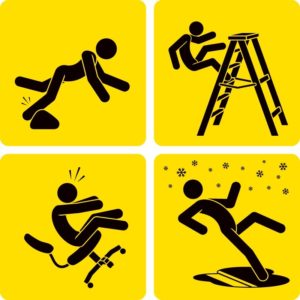29% of the total number of non-fatal injuries reported through RIDDOR in 2016/2017 (70,116) were caused by slips, trips and falls on the same level. When comparing these figures with our monthly trends analysis, it is clear that this hazard remains prevalent in the workplace and can quickly develop into an ‘accident waiting to happen’.
Our analysis identified a scaffold working lift as the main area cause of concern for this area, but let’s be clear, it occurs in many areas in many different workplaces. The resulting injuries arising out of their poor control can be very costly to the business.
Here are 10 checks to eliminate the risks of slips, trips or falls from developing as the work progresses:
- Check the structure itself. Report any protruding fittings, boards or other structural elements.
- Report all spillages onto the working platform and have the cleaned immediately. Oils and grease contaminated boards will Likely need changing for uncontaminated one.
- Check the scaffold has its statutory inspections completed, slips, trips and falls is safe to use inspections and should be recorded as compliant as part of this inspection.
- Conduct regular work area walk rounds and remove any build up of waste materials.
- Only load out the areas with the required materials for the area of application.
- Use sky hooks or other means to route cables above the work area, reducing trip hazards on the platform.
- Ensure the lighting is adequate on these areas
- Close open access hatches and gates on lifts after access
- Ensure gaps are reduced to their minimum. Where permission to remove a board has been granted, ensure the board is replaced as soon as work has ceased, even for break periods.
- Ensure the appropriate safety boots, with anti-slip protection, is worn at all times.











